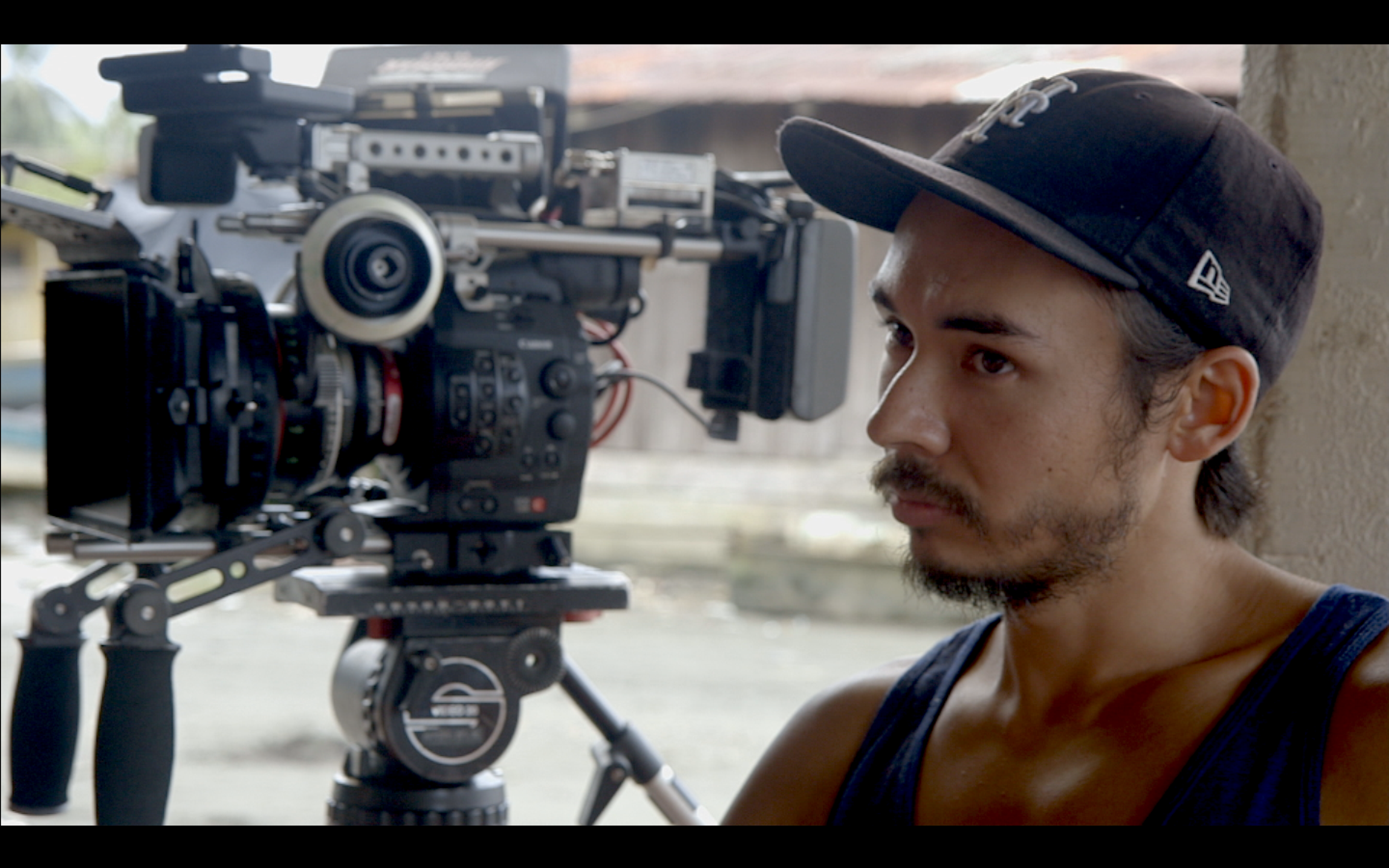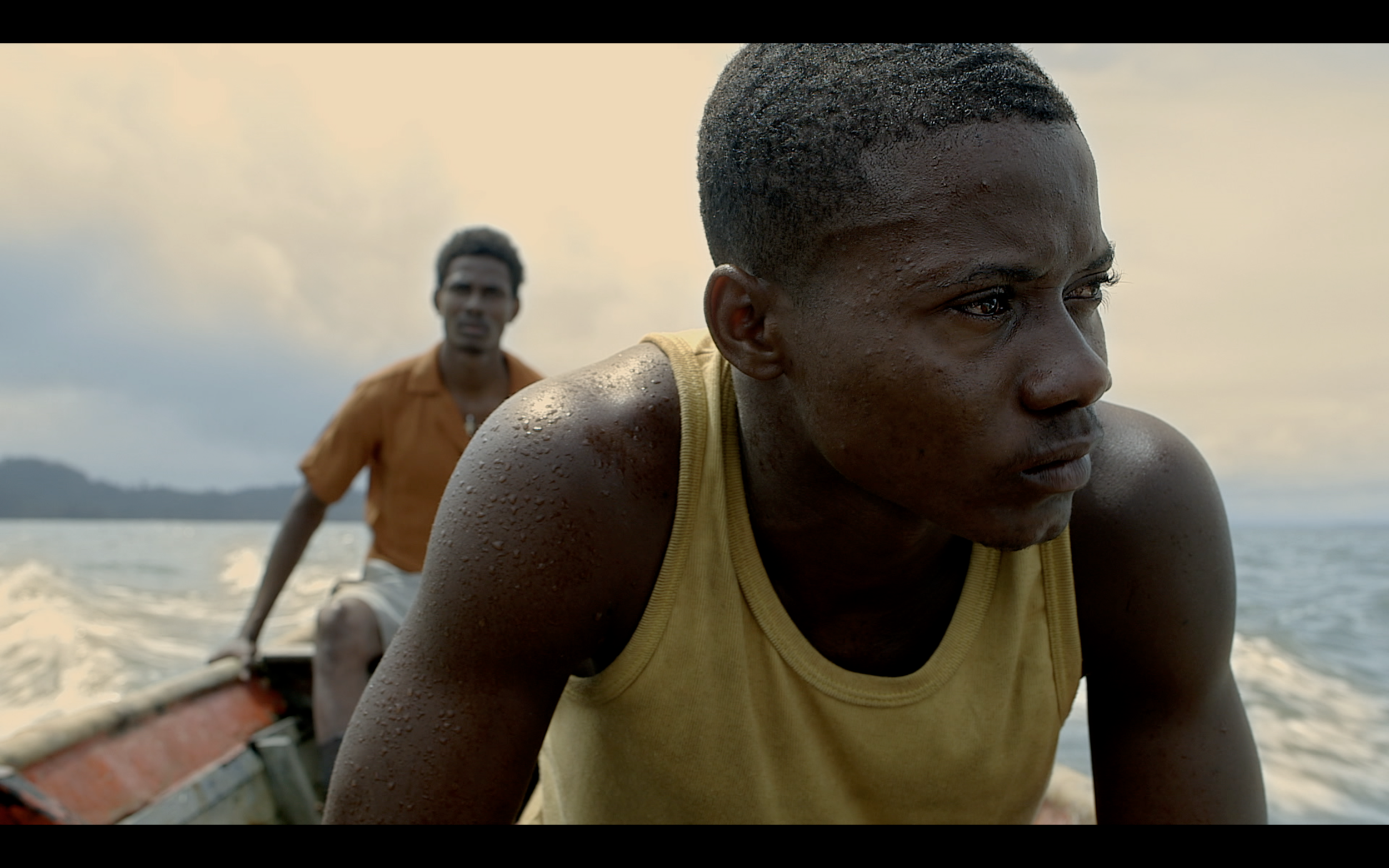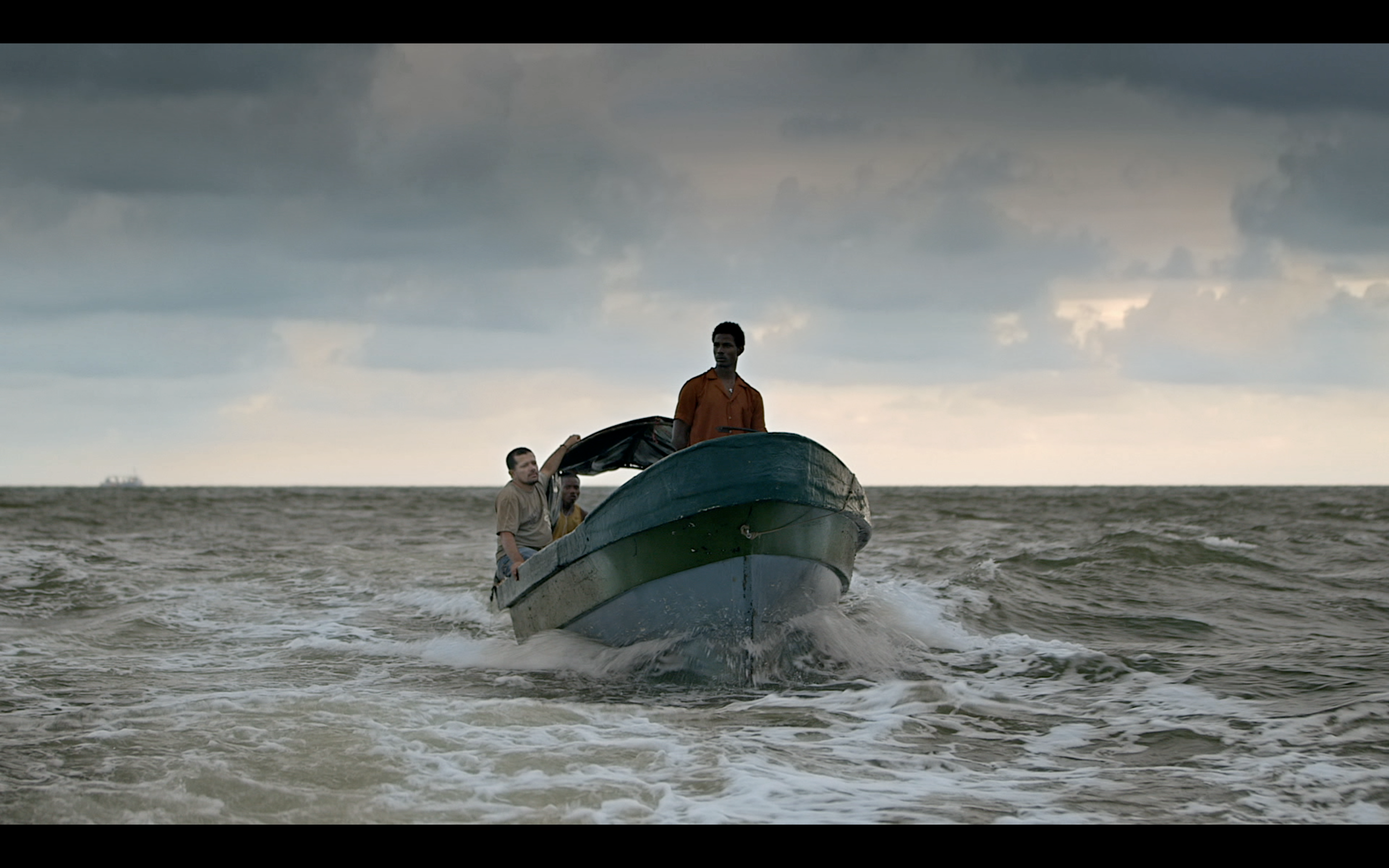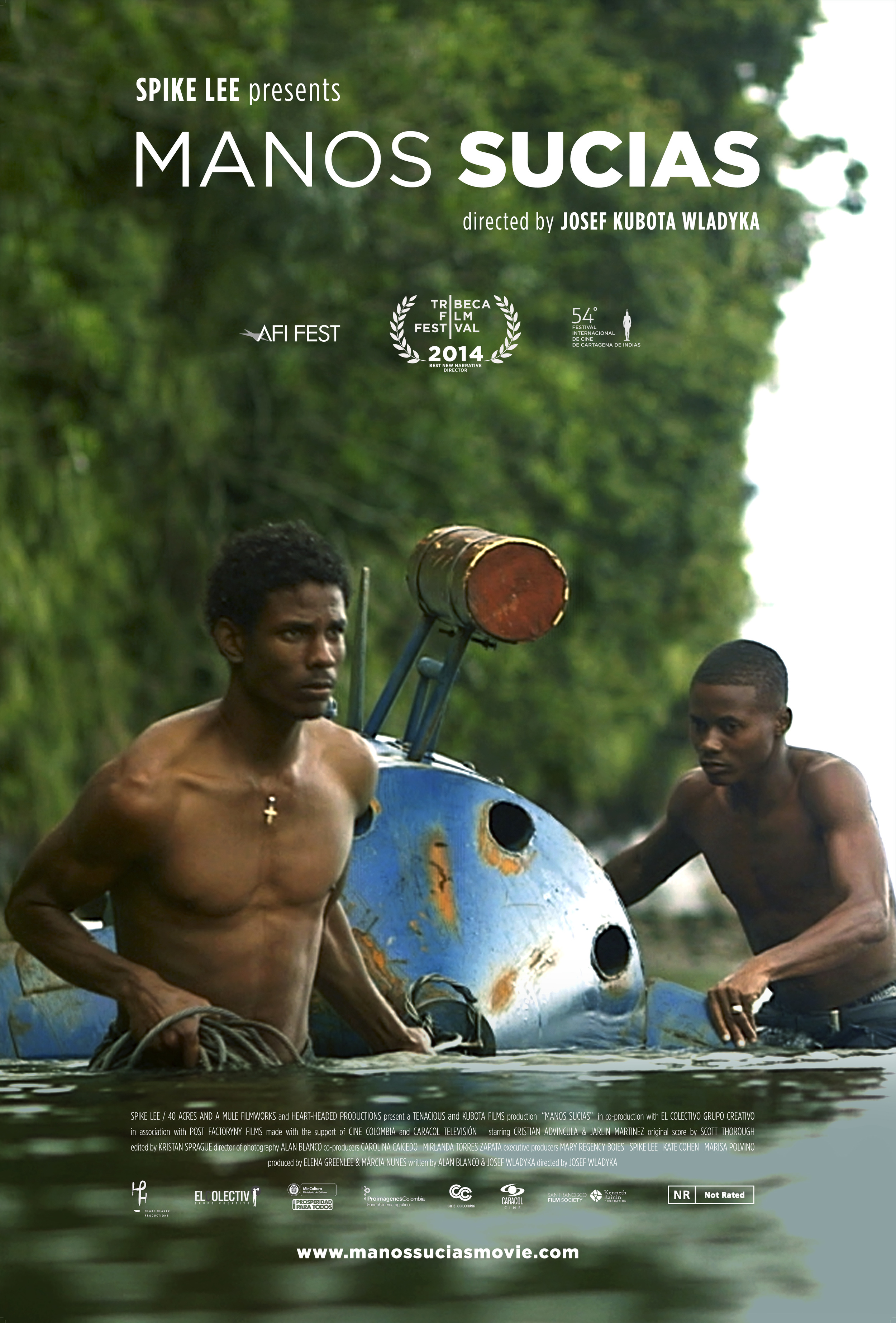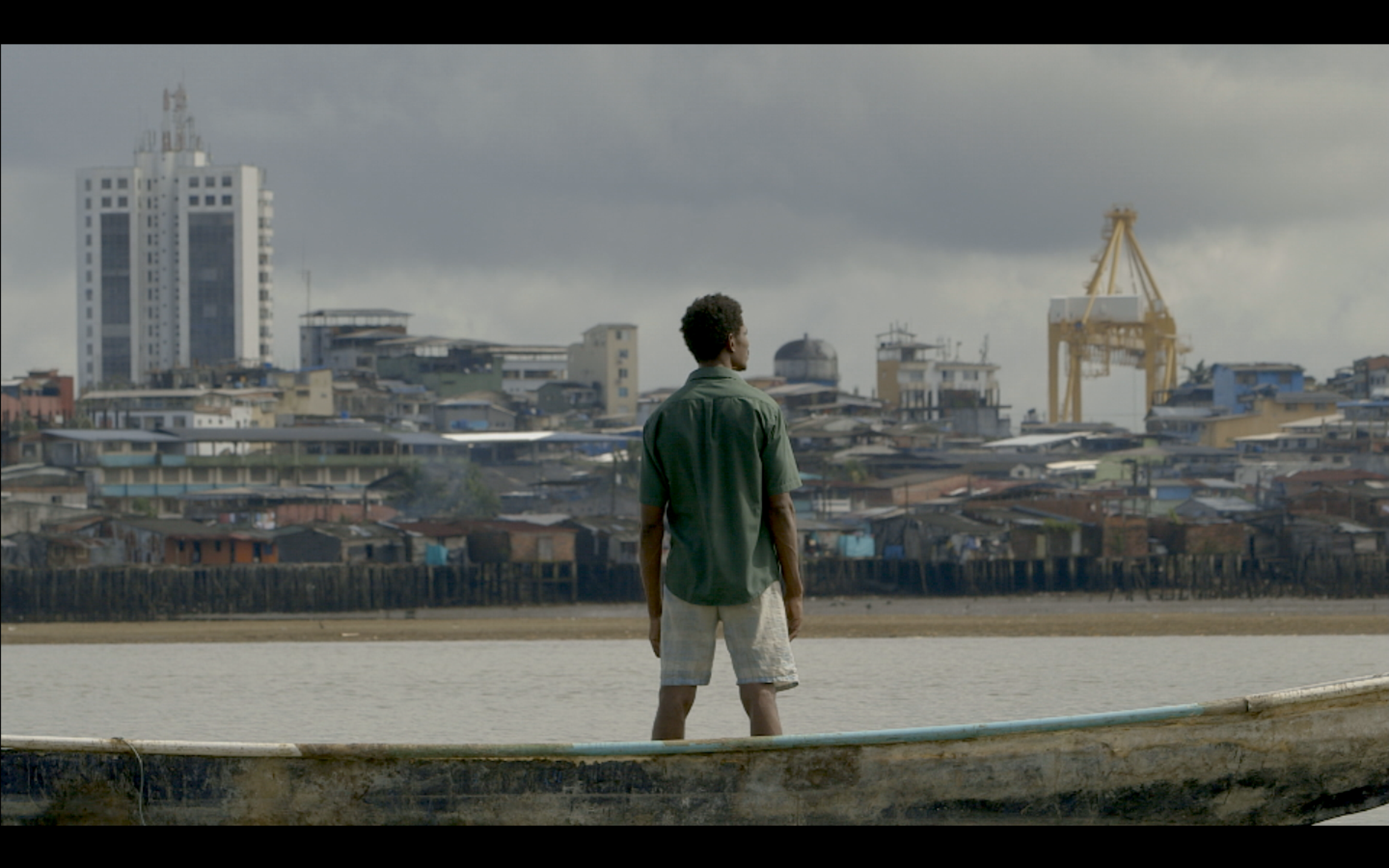“Manos Sucias” was executive produced by Spike Lee, who was also Wladyka’s professor at NYU.
“Manos Sucias” is written by director Wladyka and Alan Blanco. The taunt thriller explores the dangerous city of Buenaventura, Colombia, and is a harrowing tale of three men who embark on a journey over the dark murky waters of the Pacific.
A set of mysterious coordinates is their guide, a fishing net is their cover, and a narco-torpedo filled with 100kg of cocaine is their cargo.
Following estranged brothers as they risk everything for a chance at a better life, “Manos Sucias” takes a close look at life at the bottom of the food chain in the international drug trade.
Wladyka cast tremendously gifted newcomers including Cristian James Advincula, Jarlin Martinez, Hadder Blandon, and Manuel David Riascos.
myNewYorkeye: What were the biggest challenges in making this movie?
Josef Kubota Wladyka: There were so many challenges to overcome while making this film, but one of the biggest was figuring out how to shoot in Buenaventura. Buenaventura is a city on the Pacific Coast of Colombia plagued with many social/political issues. Our core team, myself, Alan Blanco, Elena Greenlee, and Márcia Nunes, knew that if we were to make a film there we had to come in with the right attitude and a certain sensitivity in order to be welcomed. There is no film infrastructure in Buenaventura so we encouraged the people in the community to act in and crew on the film. What at first seemed liked a challenge, turned into a beautiful collaboration with the people of Buenaventura. As one of the most hot and humid areas in the world, the physical act of making this film was also another major obstacle. Filming on boats, through thick jungles, and in other rough terrain taxed us emotionally and physically.
myNewYorkeye: Your producers are also from the NYU film program. What’s it like, as a director, to work with a good producer?
Josef Kubota Wladyka: Good producers are such a crucial part of making a film. I had the privilege of working with Elena Greenlee and Márcia Nunes, two incredibly dedicated producers whose resilience in the face of challenges amazed me. They brought so much to the project, especially from a creative standpoint.
I always leaned on them not just for the logistical aspects of the film, but also collaborating with creative decisions. They both have great taste and have an extremely important quality that I think all producers need… they are honest. As a filmmaker you need people to be 100% honest with you all the time to keep you grounded. So much of the success of this film is credited to the two of them. They truly are badass.
myNewYorkeye: How has your style changed since making the movie?
Josef Kubota Wladyka: I’m not sure if my style has changed because I haven’t made another movie yet, but I hope it doesn’t change too much. I want to try to keep telling stories that are compelling, exciting, and emotionally moving.
myNewYorkeye: What are the central themes - to you – and why did you take such risks in telling this compelling story?
Josef Kubota Wladyka: The main theme for me is the loss of innocence. In Buenaventura there are so many young kids that get caught up in this cycle of the drug trade. I think at the end of the film it is clear that Delio is now forever a part of this world. He lost his innocence by taking another life and in essence he is killing himself. Jacobo has been trapped in this cycle and at the end of the film, as he looks to his younger brother in the boat, he knows he is now trapped in it forever too.
We all took so many risks telling this story because we wanted to create an authentic and real film. We wanted to show a part of the drug trade that people rarely see and we wanted to do it in the real place with the real people. Through making this film, we witnessed the resilience of the human spirit even when faced with hardship. We learned that the drug trade is a complex system that affects more than just the people directly involved in it. We learned that those involved often times don't have a choice. For us, it was worth all the risks.
myNewYorkeye: What do you love best as a story teller?
Josef Kubota Wladyka: Being able to explore and learn about new worlds and show them to an audience.
myNewYorkeye: What’s the best advice that you’ve ever received, from anyone, that you apply to your life and work?
Josef Kubota Wladyka: I often find that the best advice is the most simple. For me, it came from Spike Lee… “Get it done, by any means necessary.”
myNewYorkeye: What’s next, talented fellow?
Josef Kubota Wladyka: Alan and I are working on various new projects, including writing for hired gigs as well as deciding what film we will make next. I am also reading a lot of scripts hoping that one might grab me and be something I would want to direct.
New York, NY (Cinema Village)
Choque Clip:
https://vimeo.com/91757746

